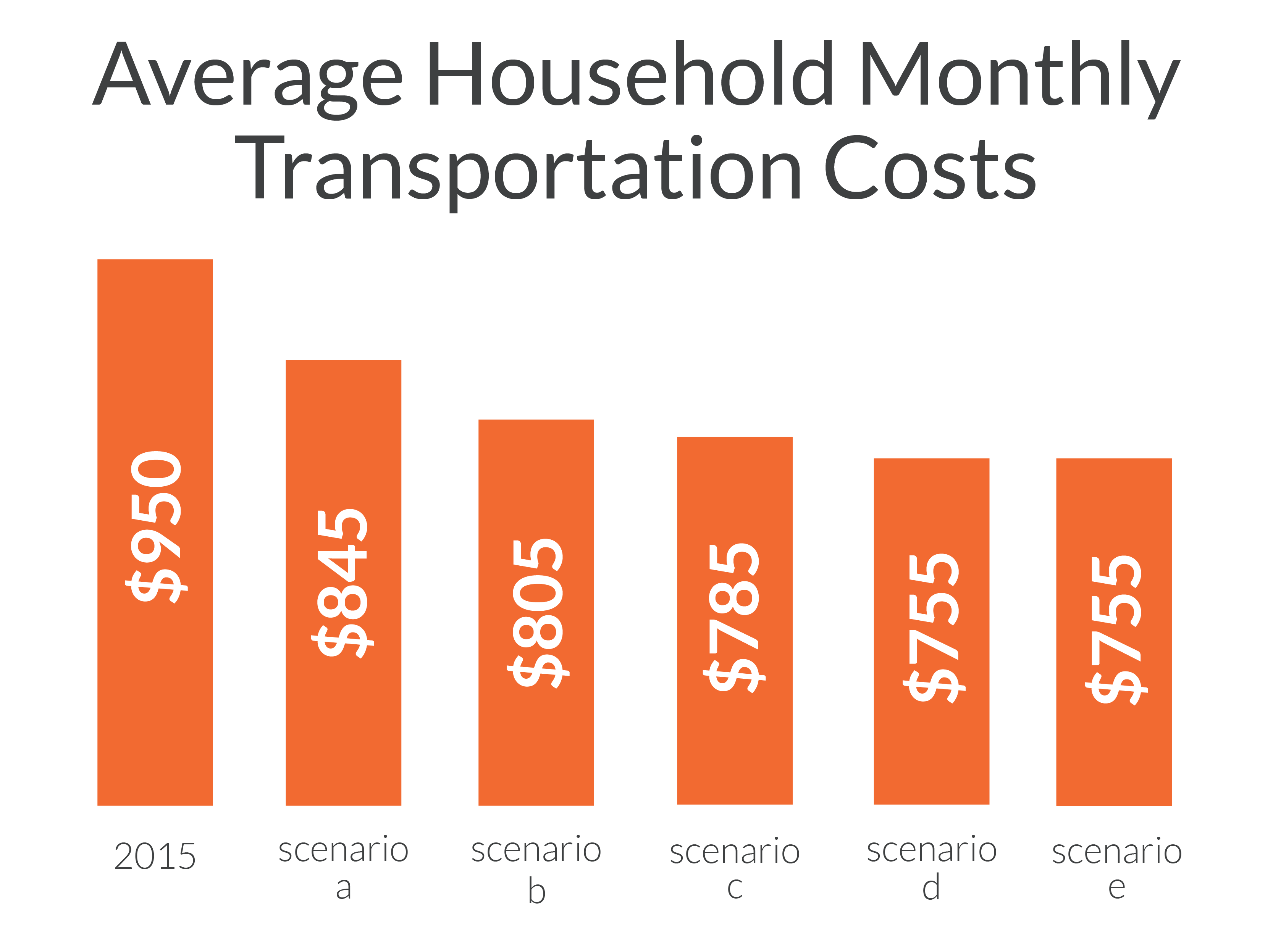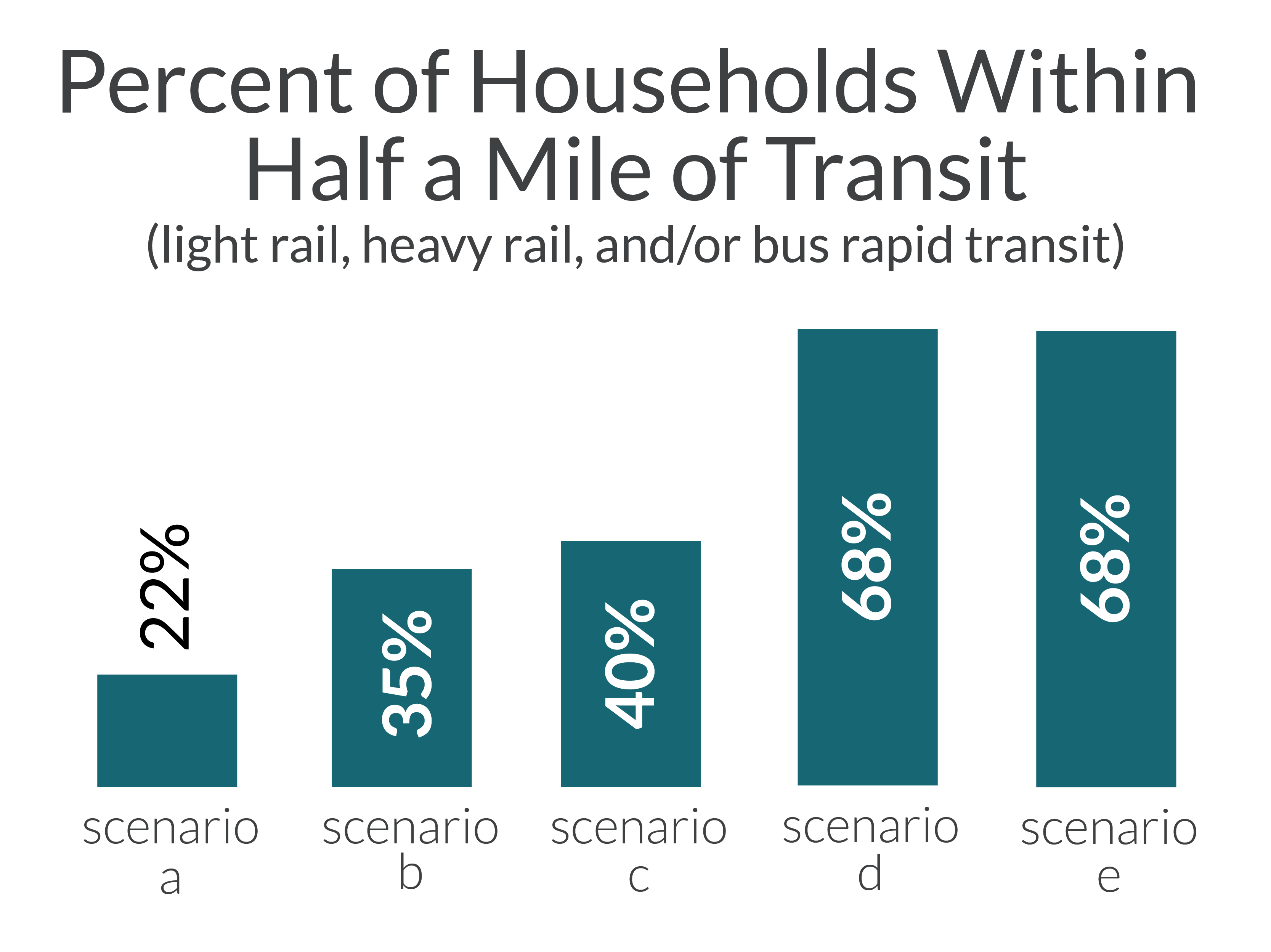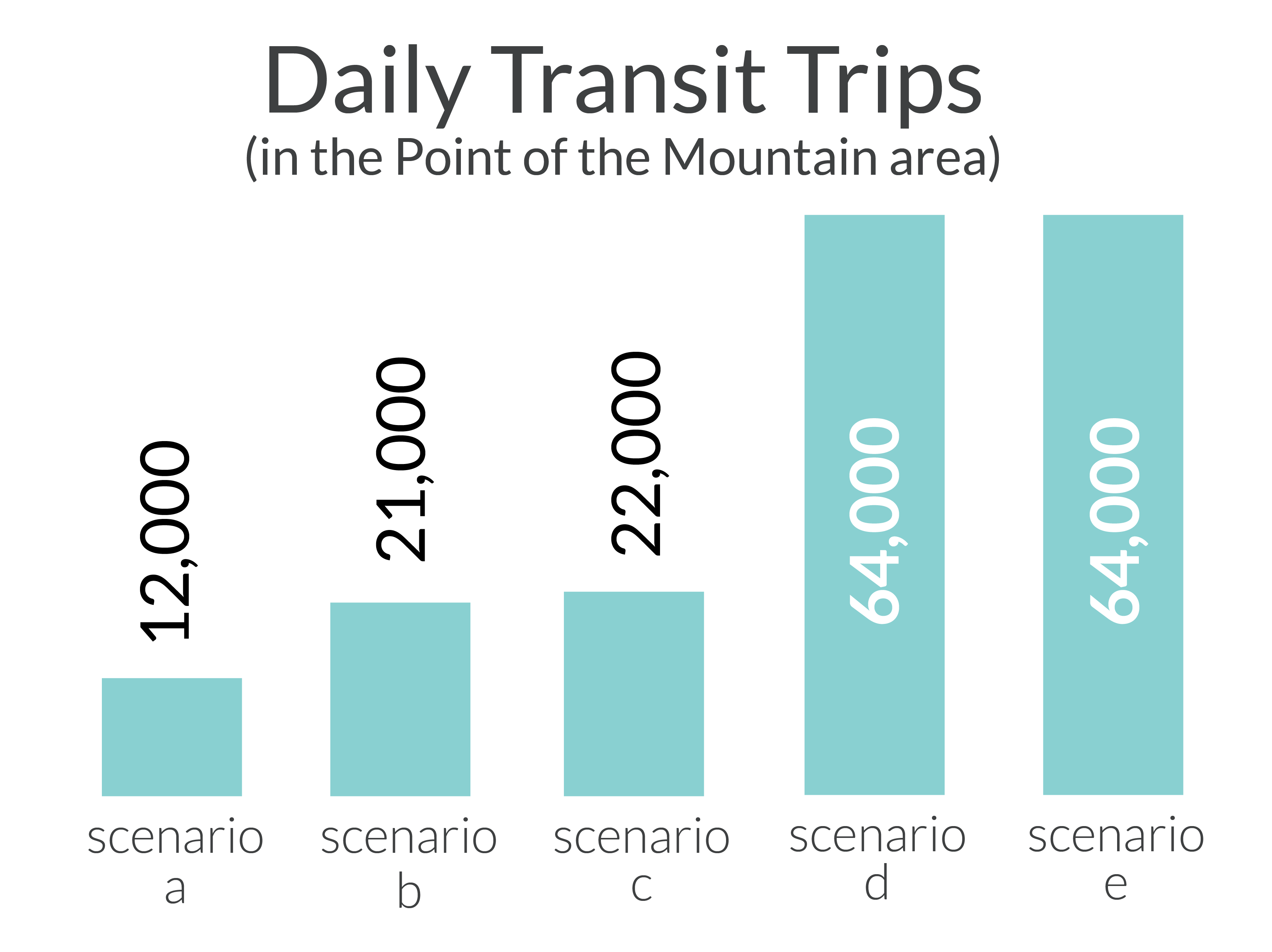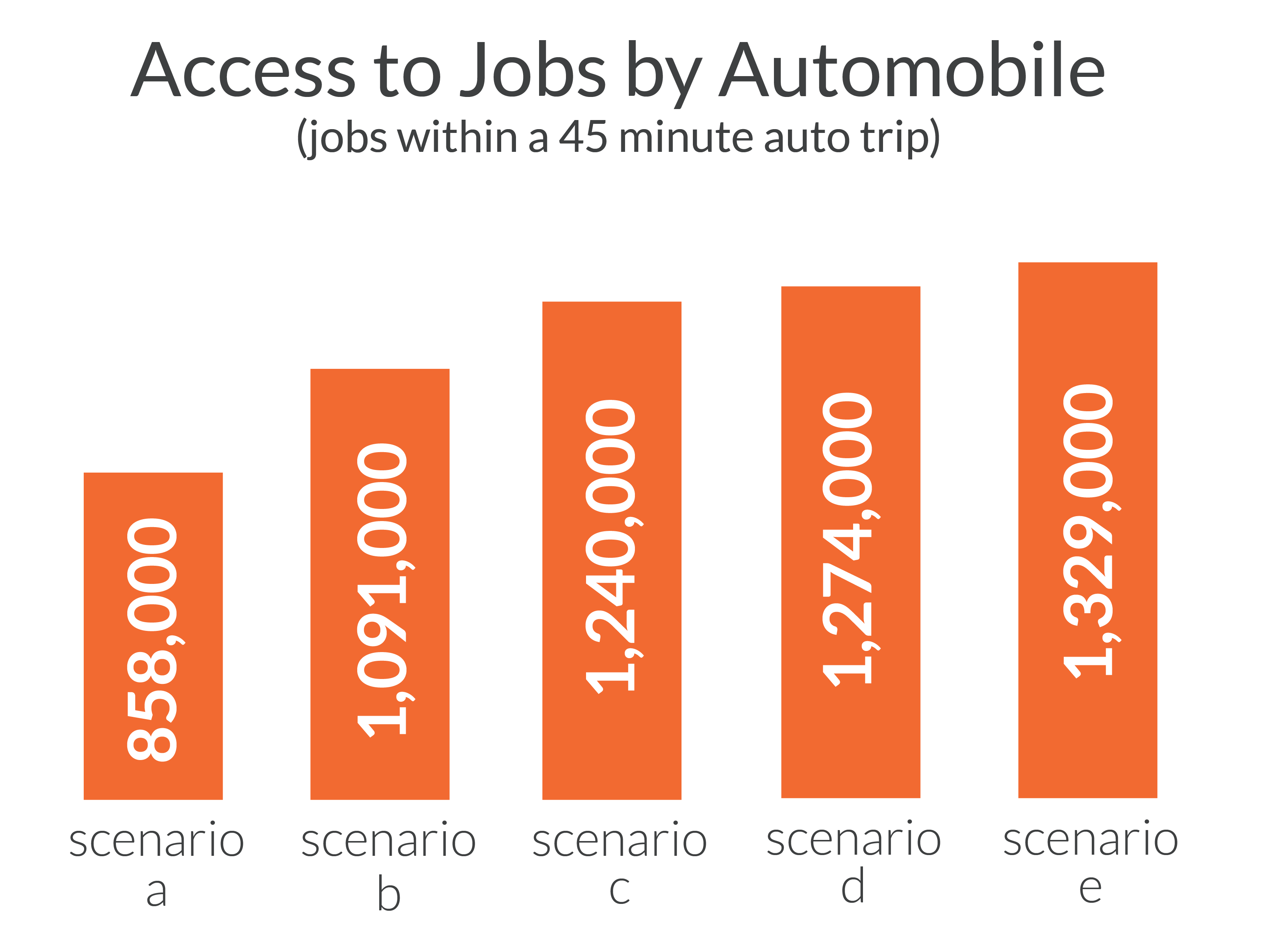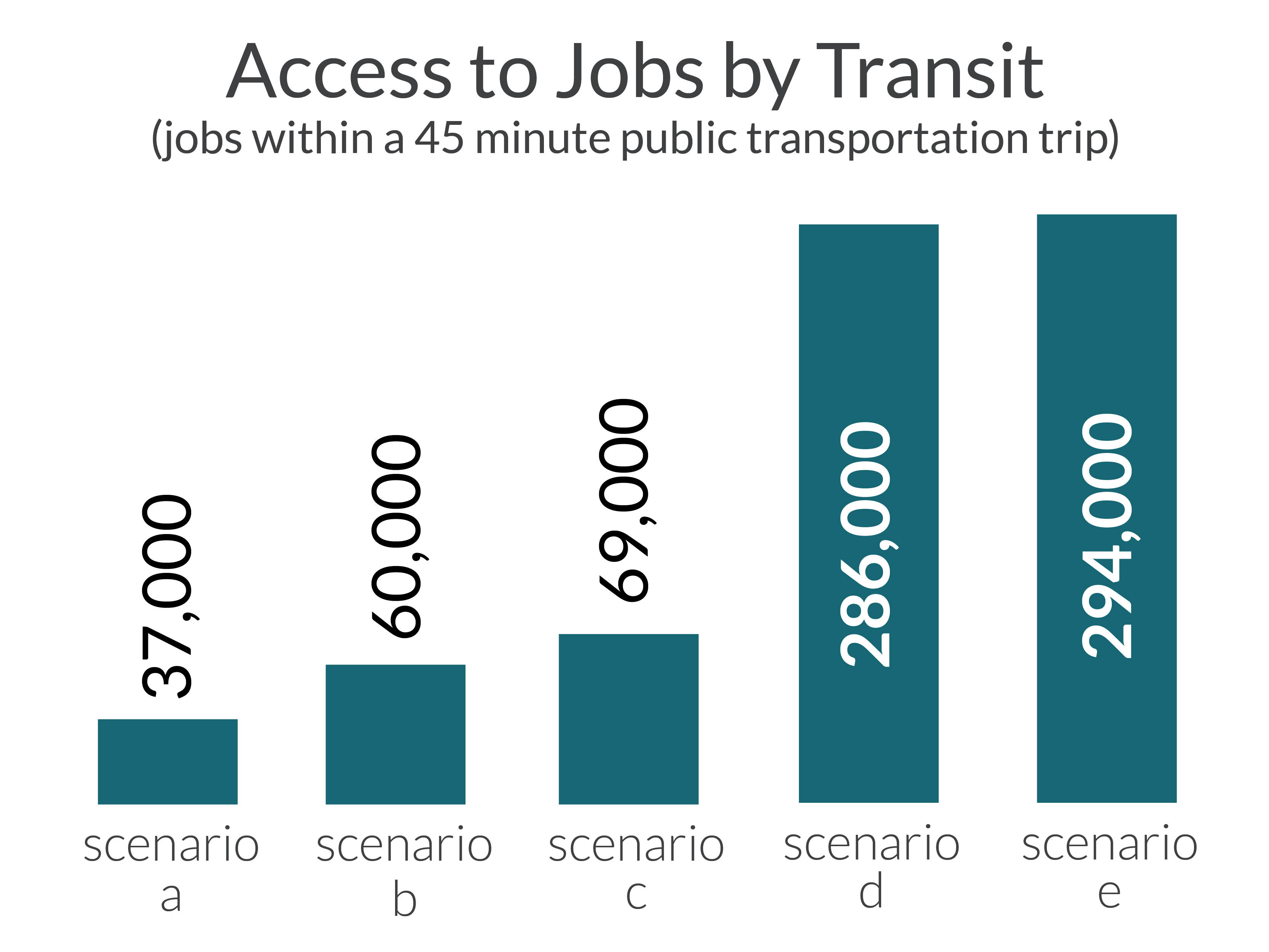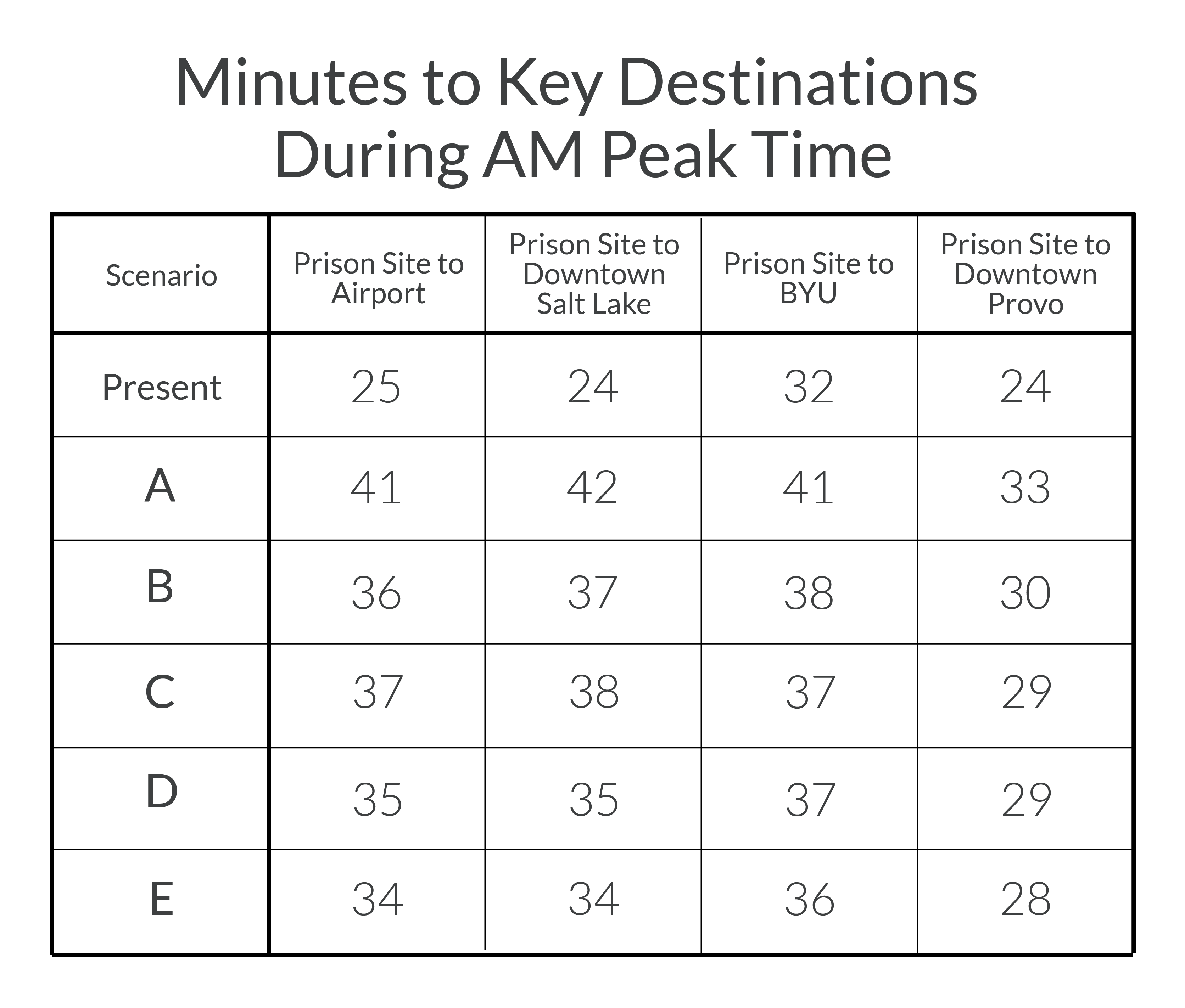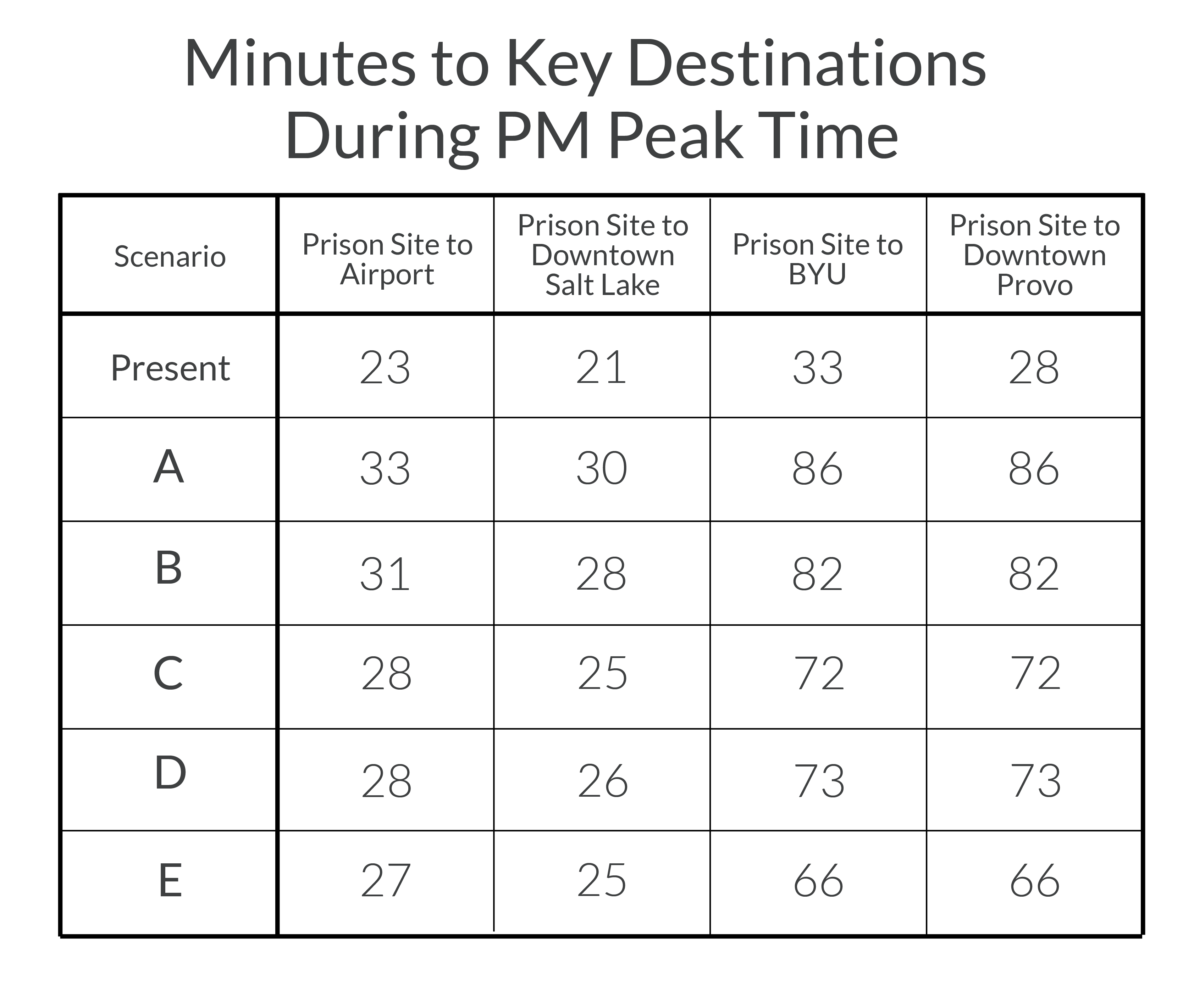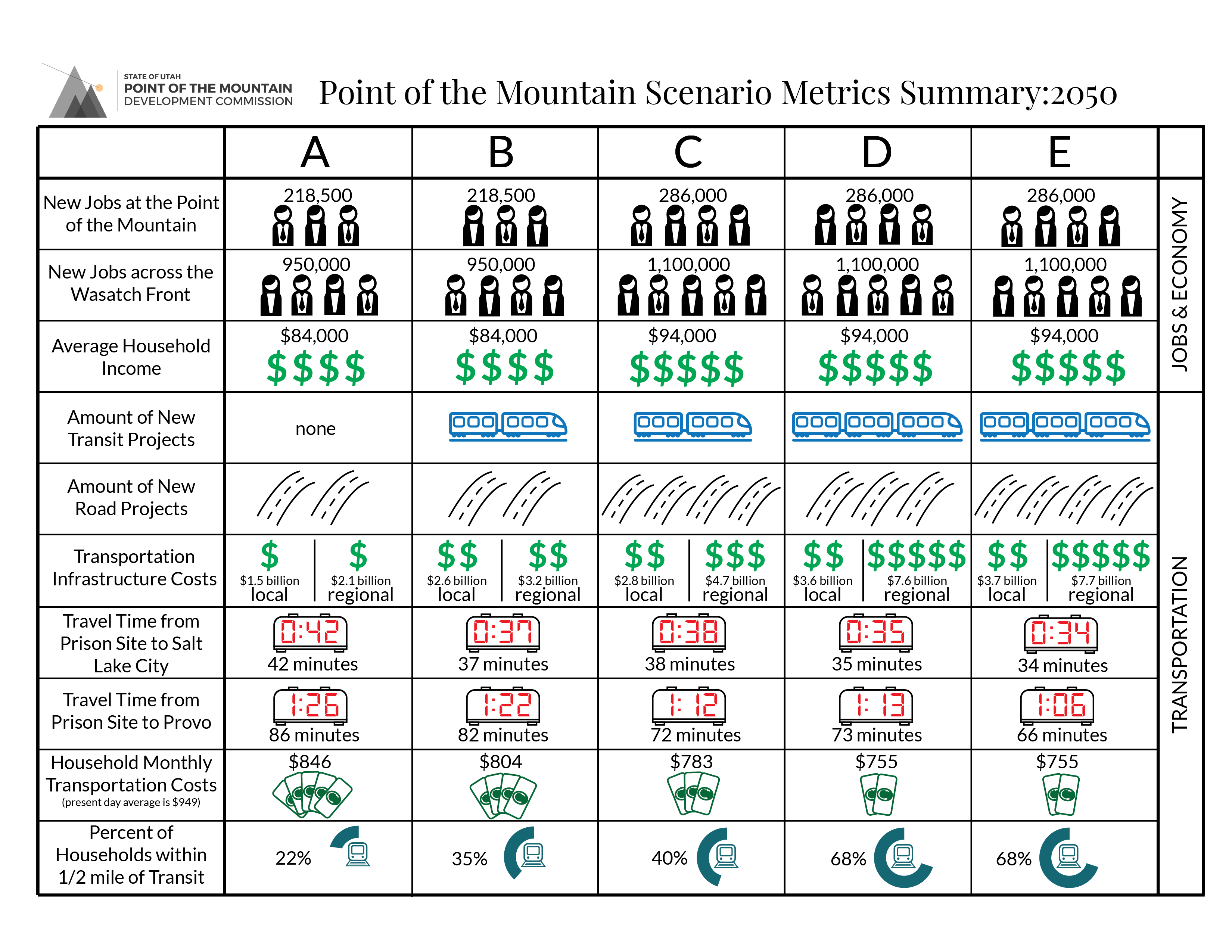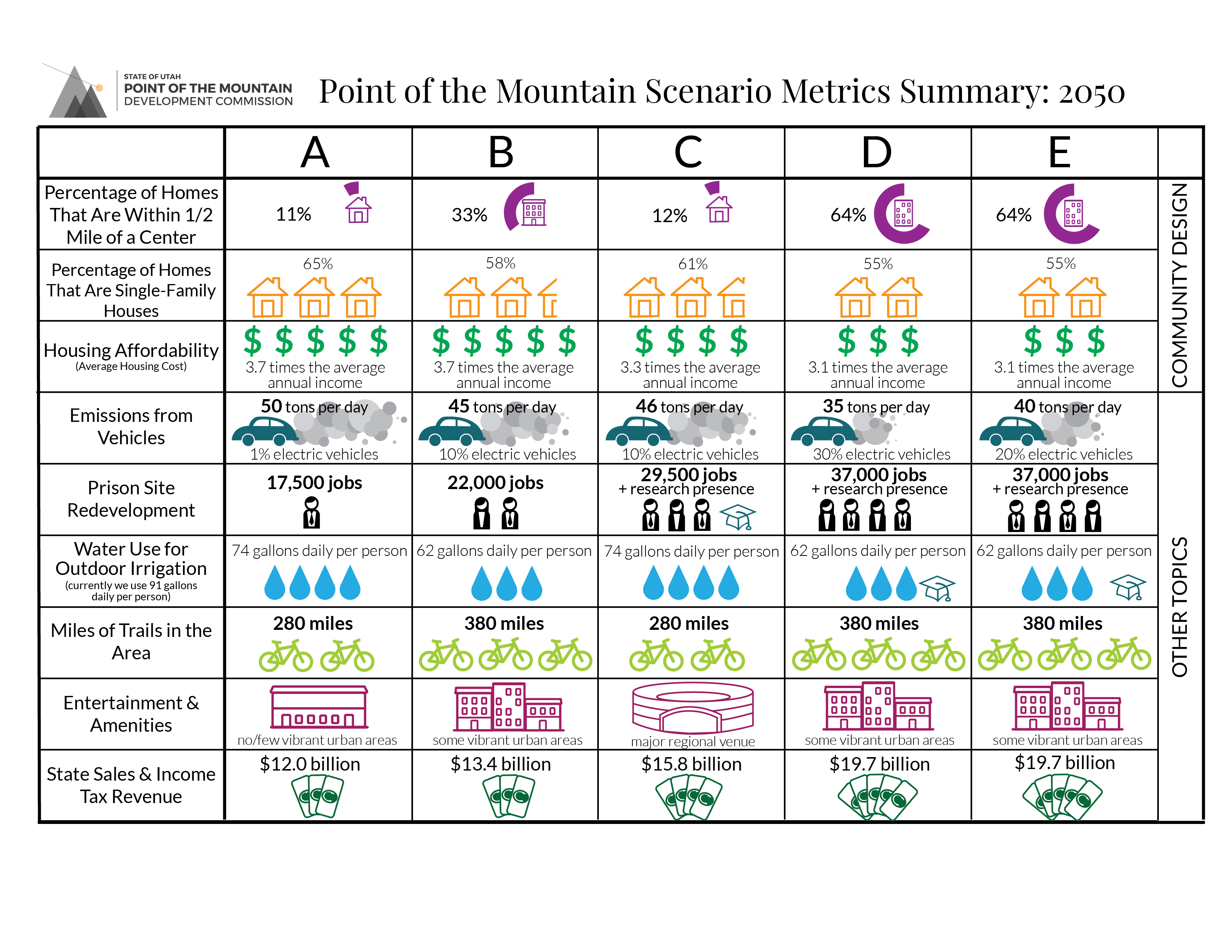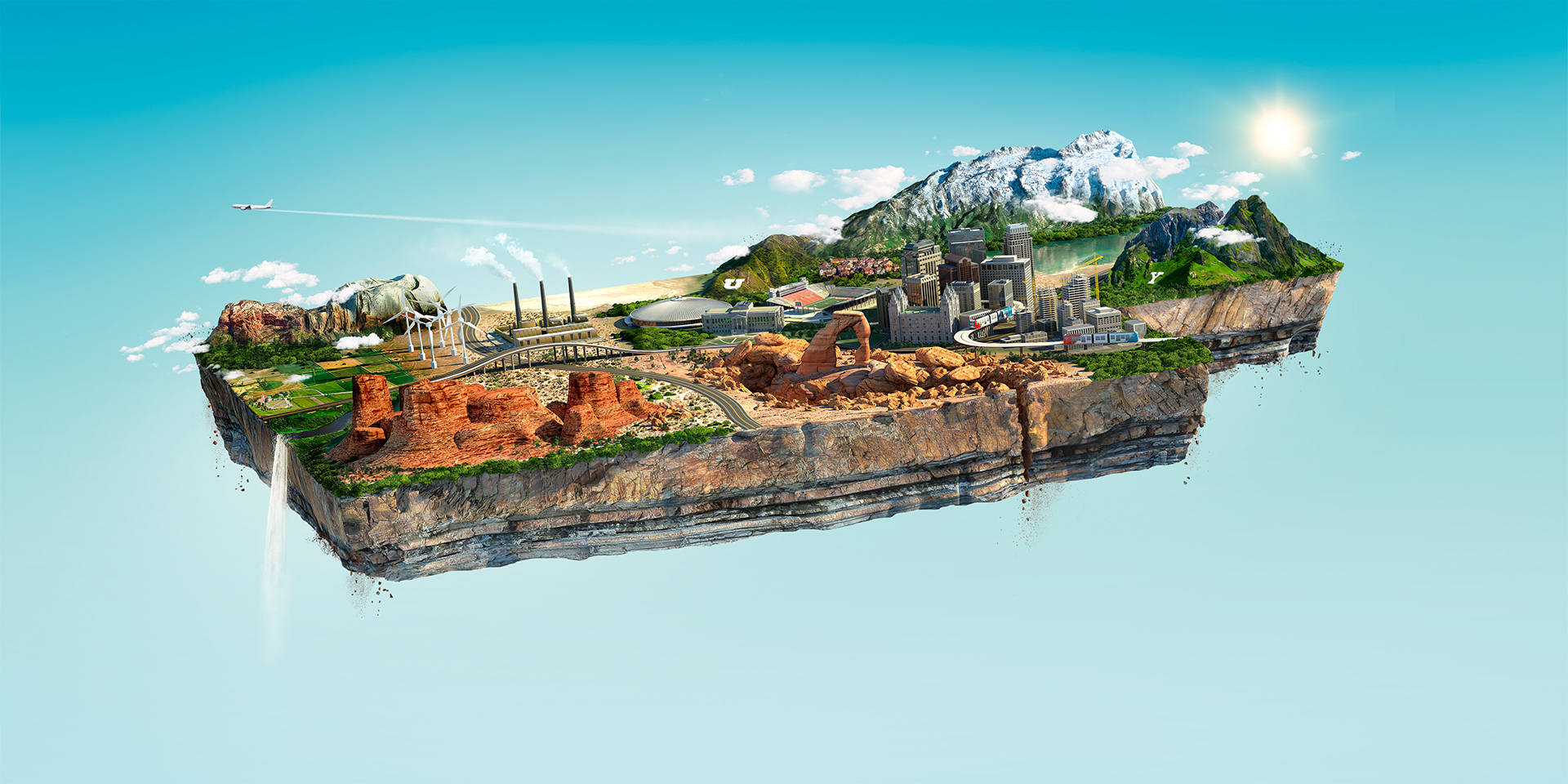The Story
Additional economic development leads to more jobs and households, increasing travel demand. Substantial additional or reprioritized funding sources allow significant construction of both roads and transit. Homes are closer to jobs and shopping than in other scenarios. There are no transit fares; riding public transportation is free. Local road networks are well connected, so that people can avoid larger roads or walk or bike more conveniently and safely. People spend less time and money on driving than in any other scenario, but infrastructure costs are higher in this scenario than in any other.
Funded road projects in this scenario include:
- The Mountain View Corridor expanded as a freeway through SR-73 (with 10 total lanes between 2100 North and Bangerter Highway, in addition to frontage roads)
- A 2100 North Freeway in Lehi
- I-15 widening projects (12 total lanes)
- A frontage road system along I-15 between SR-92 and 10600 South (4 lanes total)
- Redwood Road widening projects (6 lanes total between Lehi 2100 North and Bangerter Highway)
- A new I-15 interchange at the gravel pits
- A new north-south arterial connecting Bangerter Highway to Lehi 2100 North in between I-15 and Redwood Road (4 lanes total)
- A new freeway connection between Mountain View Corridor and I-15 near the county line (4 lanes total)
- A new freeway connection between Mountain View Corridor and Bangerter Highway at 13400 South (4 lanes total)
- Widening projects along 14400 South/14600 South (4 lanes total)
- The development of many collector roads, creating a connected grid for communities across the Point of the Mountain
Funded transit projects in this scenario include:
- The doubletracking of FrontRunner so that it can come every 15 minutes
- A new FrontRunner spur to Eagle Mountain
- A TRAX extension that diverges from the Blue Line at 10000 South, crosses I-15, passes through the prison site, crosses back over I-15, and continues to Lehi and then Orem
- A Red Line TRAX extension to 14400 South
- A Bus Rapid Transit line from the Red Line stop in Daybreak to the prison site (running along 12600 South)
- A Bus Rapid Transit line on a new north/south arterial from the prison site to 2100 North
- A ride pooling system that acts as a commuter circulator between TRAX, FrontRunner, and the Lehi job core which may later utilize autonomous (self-driving) technologies
Results
- From the Point of the Mountain during AM peak period, it takes 34 minutes to drive to downtown Salt Lake City, 34 minutes to the Salt Lake airport, and 46 minutes to the University of Utah. During PM peak period, it takes 66 minutes to drive to downtown Provo.
- A typical Point of the Mountain resident can access 1.33 million jobs within a 45-minute commute by car, or 290,000 jobs within a 45-minute commute by public transportation.
- 64,000 trips in the Point of the Mountain area are made by public transportation each day.
- On average, a Point of the Mountain household pays $755 per month for travel expenses (gas, insurance, car payments, transit fares, etc.).
- Over the next 33 years, new transportation infrastructure in the area costs $7.7 billion for regional projects and $3.7 billion for local projects.
- 68% of homes in the area are within ½ mile of high-frequency public transportation (e.g., rail).
- 43% of the work trips from Point of the Mountain residents never leave the Point of the Mountain area.
